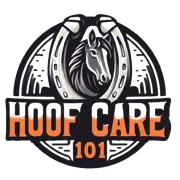Introduction
When it comes to equine care, understanding the distinct characteristics of each animal’s hooves is as important as knowing your lasso from your lead rope. While donkeys and horses may share some similarities in appearance, their hooves tell a different story. This article delves into the fascinating differences between donkey and horse hooves, highlighting why each requires a unique approach to hoof care.
Shape and Structure
The most noticeable difference lies in the shape. Horse hooves are generally rounder, a trait that’s been accentuated through domestic breeding. In contrast, donkeys boast a more upright, elongated hoof shape. This design is not just for show; it equips them to traverse their native rugged terrains with ease.
Hoof Angle
When examining the hoof angle – the meeting point of the hoof bottom and pastern – donkeys stand out with their steeper angles. This isn’t just a matter of equine fashion; it’s a critical feature that aids donkeys in maintaining stability on uneven surfaces.
The Frog
Peek at the bottom of the hoof, and you’ll spot the frog. In donkeys, it’s smaller and tougher compared to its horse counterparts. This difference is more than skin deep; it’s a survival adaptation, allowing donkeys to tread on harsher grounds without flinching.
Hoof Wall
Thickness is in for donkey hoof walls, a feature developed over generations to endure the arid, rocky environments they often call home. Horses, meanwhile, have evolved with a variety of hoof wall thicknesses, largely influenced by human breeding practices.
Sole and Moisture Content
The sole of a donkey’s hoof is as tough as old boots, a necessity for enduring the relentless terrain of their natural habitats. These hooves also have a lower moisture content, making them well-suited for dry climates but requiring extra attention in damper environments to prevent hoof issues.
Care Requirements
This brings us to the crux of the matter – hoof care. Donkeys’ hardier hooves might not need as frequent trimming as horse hooves, but neglect is not an option. Regular check-ups are vital to ensure their hooves don’t overgrow or develop problems, especially in climates they’re not naturally adapted to.
Conclusion
Understanding these differences is not just a matter of equine trivia; it’s essential for the health and well-being of these animals. Whether you’re a seasoned rancher or a new hand at the stable, remember: just as each animal has its own personality, each hoof has its own story, and it’s up to us to listen and care for them appropriately.
